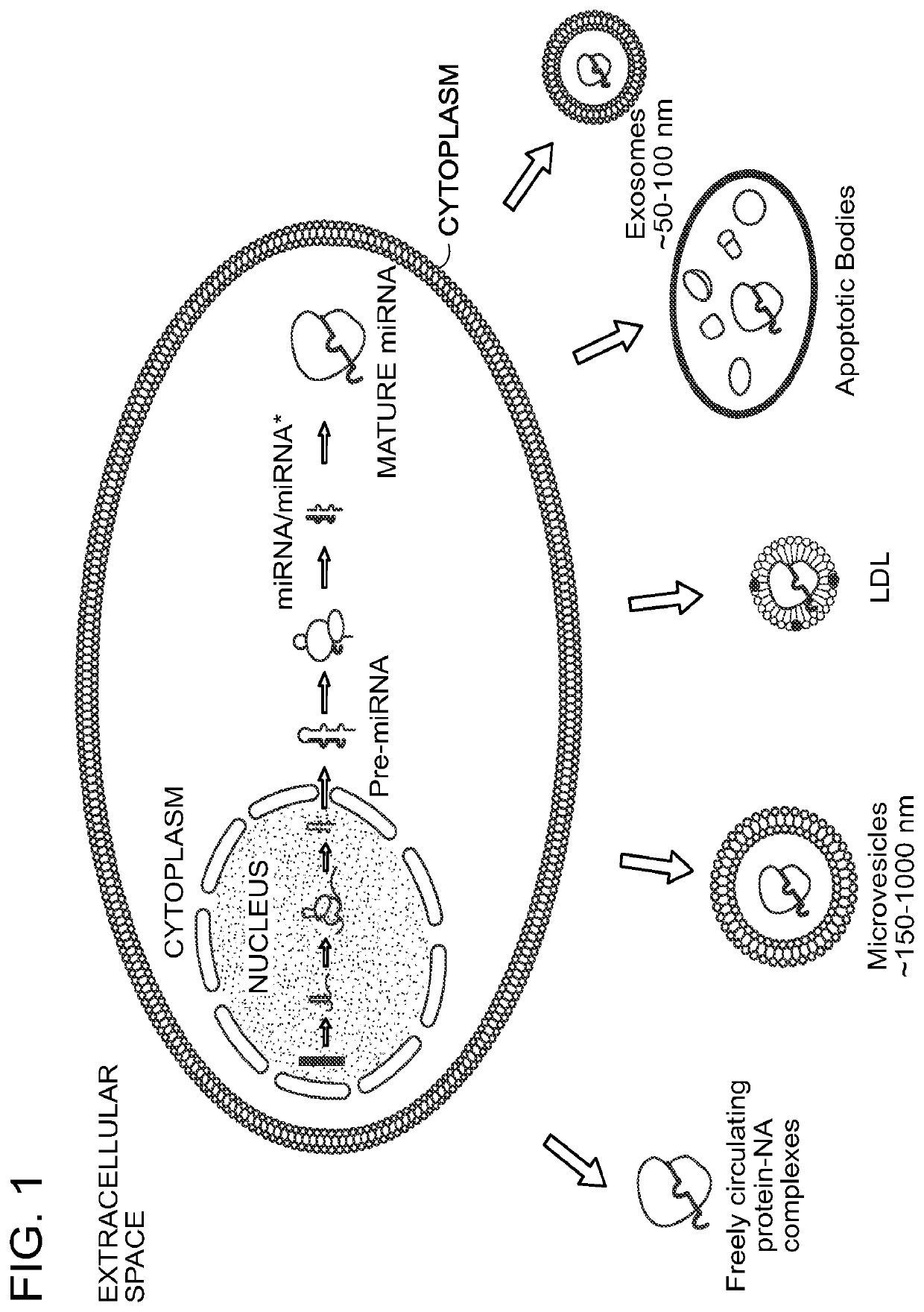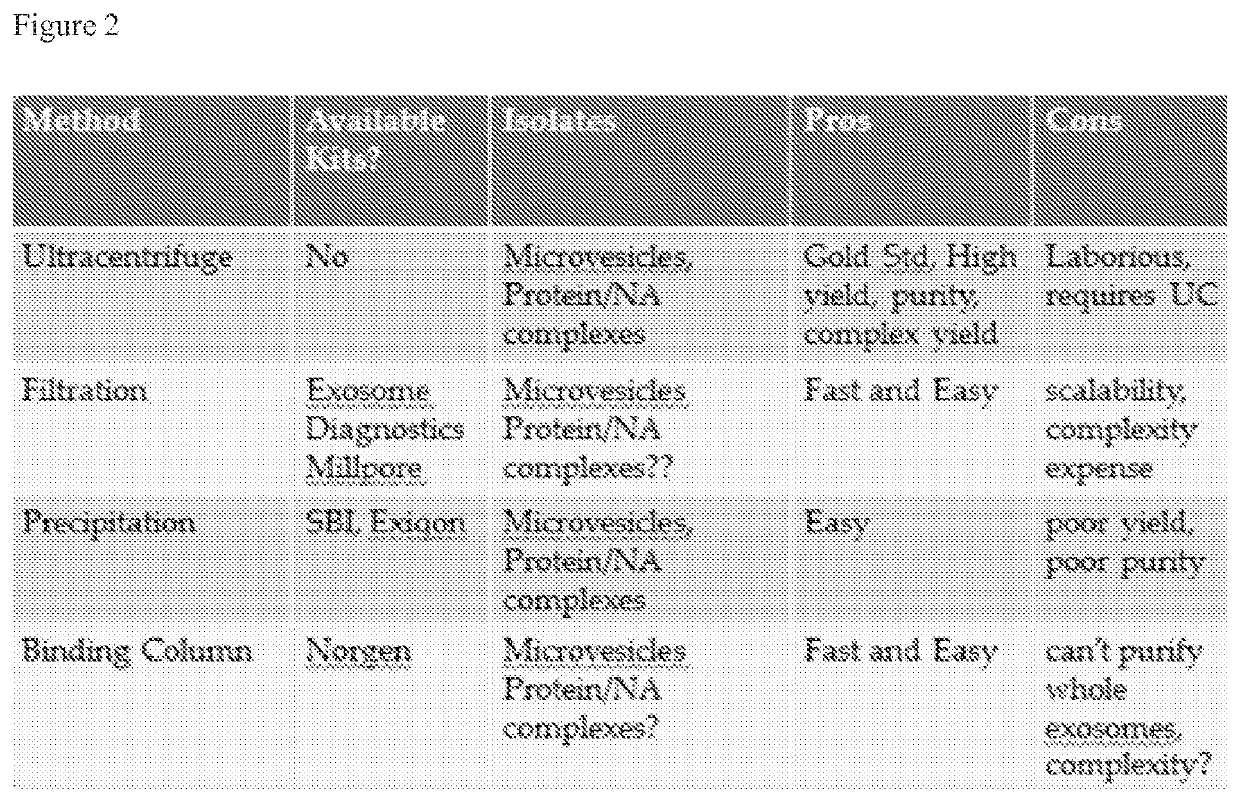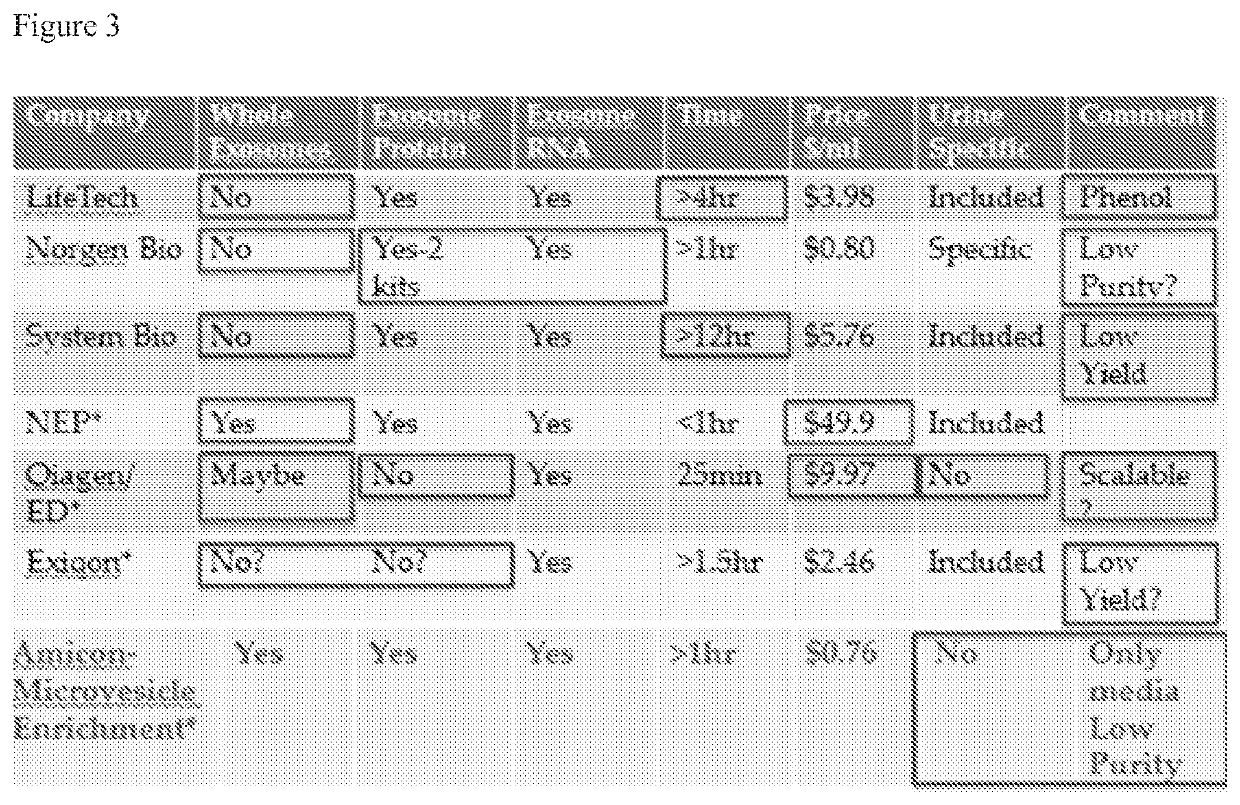Methods for the isolation of extracellular vesicles and other bioparticles from urine and other biofluids
a technology of bioparticles and vesicles, applied in the field of cell biology, can solve the problems of prohibitive co-purification of pcr inhibitors and complicating downstream nucleic acid analysis, and achieve the effect of not co-purifying prohibitive amounts of pcr inhibitors
- Summary
- Abstract
- Description
- Claims
- Application Information
AI Technical Summary
Benefits of technology
Problems solved by technology
Method used
Image
Examples
example 1
A Newly Discovered Na Urate Protocol Isolated Microvesicles from Urine Quickly and Effectively
[0176]To exemplify certain methods of the invention, 3 mls whole urine samples from two different donors (one sample was naturally concentrated and one sample was naturally dilute) were treated with 16 mM TCEP reducing agent as part of a Whole Urine Prespin Treatment Solution, which simultaneously reduced the pH to <6 and was believed to have reduced the matrix-forming properties of the abundant endogenous urine protein, THP. The mixture was immediately centrifuged at 1,000×g for 5 minutes to remove cells and debris. The supernatant was gently removed and then 40 microliters per ml of sample of 131 mM Monosodium urate (in 1 N NaOH) was added to create a mixture. This mixture was incubated for 15 minutes on ice and then centrifuged for 5 minutes at 1,000×g in a desktop microcentrifuge. After centrifugation, the supernatant was gently removed and the pellet was resuspended in a small volume o...
example 2
The Na Urate Process More Completely Depleted Urine of Bioparticles than the Ultracentrifuge Method
[0187]The fact that the instant Na Urate method isolated significantly more of several protein and microRNA markers for bioparticles, and also of particles as judged by NTA and TEM (see Example 1 above), strongly suggested that the instant method could isolate the same bioparticles which the heretofore gold standard method of ultracentrifugation could. This was important, as there was also value in depleting biofluids such as urine, blood serum / plasma, and tissue culture serum of bioparticles. To determine if the instant method more completely depleted urine of bioparticles than the ultracentrifuge method, the instant method and the ultracentrifuge method were applied to 1.5 mls of urine from the same sample. Subsequently, the respective final supernatants for each method represented bioparticle-depleted urine. These depleted urine samples were then applied to the alternate method (i.e...
example 3
The Na Urate Process Isolated Bioparticles / Microvesicles from Non-Urine Biofluids
[0188]To determine if the instant method could isolate bioparticles from liquid other than urine, bioparticles were initially isolated from 1.5 ml of urine using ultracentrifuge. These bioparticles were then added to pure water, and the instant method was applied. This was considered to be an ideal test for the hypothesis that the instant method could isolate bioparticles from other fluids, because water contains no salt, has a neutral pH, and also has no other constituents of urine. As FIG. 15 shows, the instant method was capable of isolating a small amount of TSG101 and a significant amount of CD9 exosomal markers even from water (lane 6). Although little Aqua-2 was recovered, this was likely due to the small amount of Aqua-2 isolated by ultracentrifuge in the first place (lane 3), which meant that little Aqua-2 was introduced into the water at the outset. This demonstrated the ability of the instant...
PUM
| Property | Measurement | Unit |
|---|---|---|
| pore size | aaaaa | aaaaa |
| pore size | aaaaa | aaaaa |
| pore size | aaaaa | aaaaa |
Abstract
Description
Claims
Application Information
 Login to View More
Login to View More - R&D
- Intellectual Property
- Life Sciences
- Materials
- Tech Scout
- Unparalleled Data Quality
- Higher Quality Content
- 60% Fewer Hallucinations
Browse by: Latest US Patents, China's latest patents, Technical Efficacy Thesaurus, Application Domain, Technology Topic, Popular Technical Reports.
© 2025 PatSnap. All rights reserved.Legal|Privacy policy|Modern Slavery Act Transparency Statement|Sitemap|About US| Contact US: help@patsnap.com



